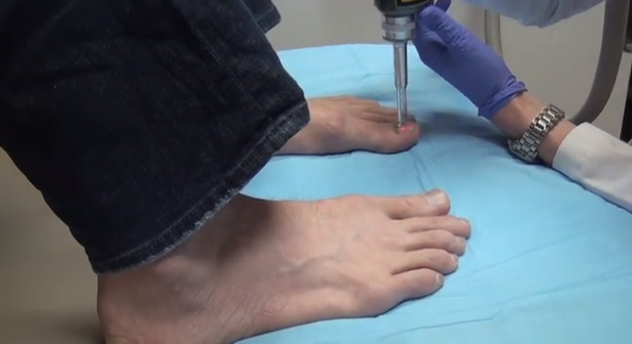 Fungi and bacteria exist in the body in small numbers, but when they start to overgrow, an infection is said to occur. There are different classifications of nail fungus with each having different signs and symptoms. Nail fungus is caused by various reasons some of which include:
Fungi and bacteria exist in the body in small numbers, but when they start to overgrow, an infection is said to occur. There are different classifications of nail fungus with each having different signs and symptoms. Nail fungus is caused by various reasons some of which include:
- Diabetes
- Wearing artificial nails often
- Walking barefoot in public areas
- Nail trauma
- Weakened immune system
- Wearing closed shoes for a long time
- Diseases of the blood vessel
Toenail Fungus Terms Explained
Nail fungus is treatable and you need to take preventive measures to prevent a reinfection. If you’ve been affected by toenail fungus, here are some terms that you might be hearing or reading frequently:
- Podiatrist: This is a doctor who diagnoses and treats conditions of the foot, ankle and other related parts of the leg. The doctor is trained to treat the legs and he or she could specialize in surgery, medicine, wounds, sports and diabetic care
- Nail bed: This is the skin found underneath the nail plate. It’s made up of two types of tissues; the dermis and the epidermis
- Nail sinus: This is the base of the nail beneath the skin. You could also refer to it as the nail root
- Fungi: These are microscopic living organism which are different from plants and animals and exist in a kingdom of their own. They flourish in low moisture and acidic environments. Normally, they obtain nourishment from dead organic matter
- Onychomycosis: This is a common fungal infection of the fingernail or toenail which results in the nail appearing brittle, thickened, yellowish and opaque
- Subungual Hyperkeratosis: This is a symptom observed on nails affected by fungi and it involves loss of the outer layer of the nail
- Proximal Onychomycosis: These are the yellow spots present at the bottom of the nail. This is the least type of toenail fungus and it’s common in patients whose immunity has been compromised
- Distal Subungual Onychomycosis: This is when fungus affects the nail bed and the underside of the nail plate thus crumbling the tips or corners of the nail
- Lateral Onychomycosis: This is when fungus invades the superficial layers of the nail plate to form yellow or white streaks on the nail’s surface
- Dermatophytes: These are the fungi that cause toenail fungus
- Laser Treatment: This is a toenail fungus treatment method which uses intense light to destroy the fungus. This treatment is very efficient especially if you have stubborn nail fungal infection. A new and cleaner nail is visible after a period of 2 to 3 months. It’s also referred to as photo-dynamic therapy
- Debridement: This is the process of filing away the thickened part of the infected nail to reduce the surface of nail that needs to be treated.
Conclusion
It takes time to treat toenail fungus, as such, make sure you take preventive measures to prevent a re-infection. Make sure that you work with your podiatrist to ensure that you have completely eradicated the fungus.


